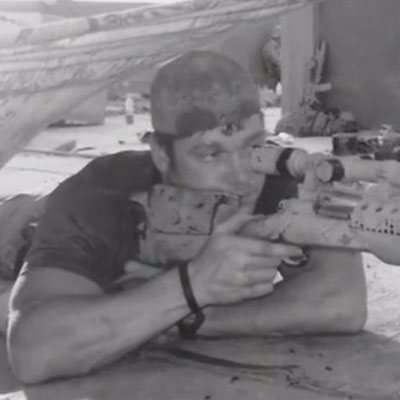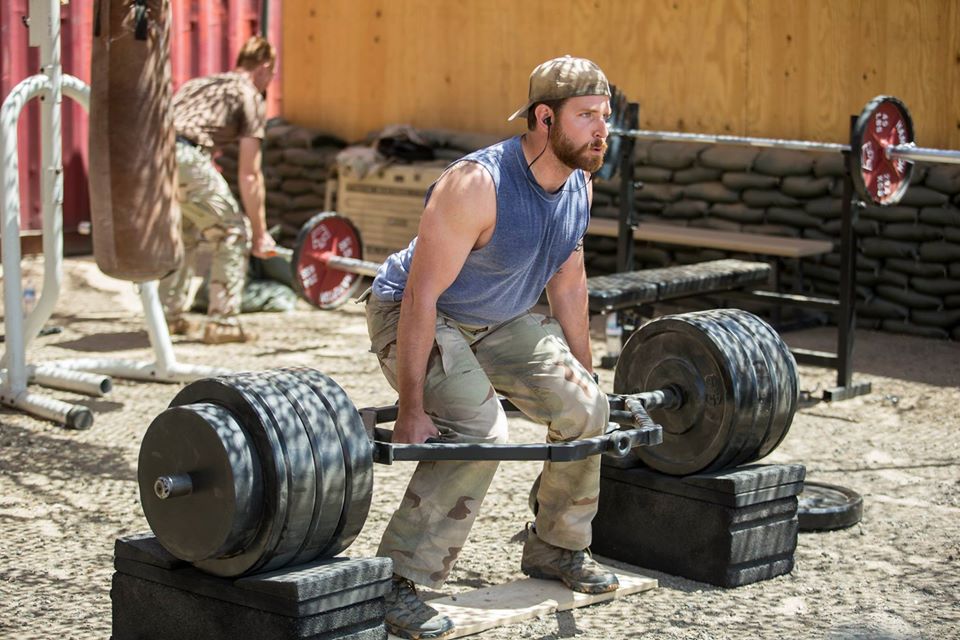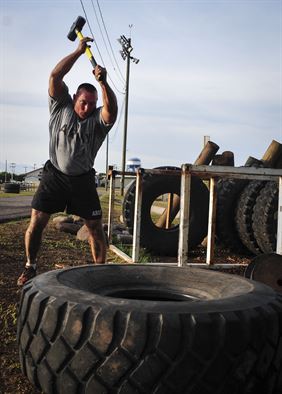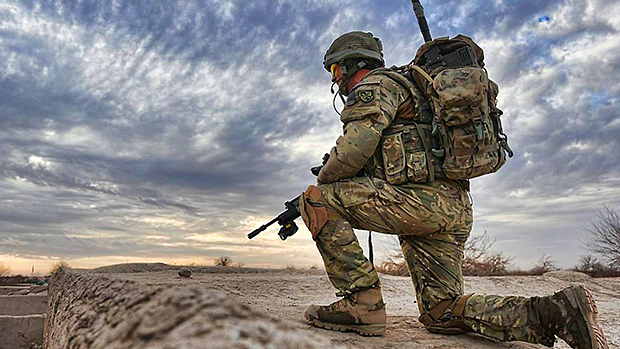On your feet, Soldier!
The “Covid-19” code-named war is raging outside. Time to read the third article of my series on home training, in which we already saw some incredible shapes built either by athletes actually getting paid to stay in top shape, or by detainees who have more time to sit on their hands.
Let’s now have a thorough look at what some of our best men/women can achieve, even though most of them are sleep and micronutrients deprived while in a caloric deficit in war zone. That’s right: military lads. There definitely is a gap between your favorite Youtuber/influencer who keeps talking about “grinding”, motivation, dedication over and over (and sometimes train -or has trained- in a bright, clean, air-conditioned and fully-equipped gym), and armor-clad soldiers carrying 100lbs of weapons, running and shooting all day, all night while getting shot at, who are outright requested to shrug it off in order to protect our rights and security. Considering that they barely sleep, sometimes for several days, are fed with poorly-nourishing canned or dried food, and stay in the heat and sun for weeks… well, you can’t possibly get any more hardcore than this.
Military Training To Influence Your Home Training
Military training is largely based on endurance and stamina, as they need to stay tough, but strength training is also a key part of their physical abilities. Indeed, the higher the absolute strength they have, the better it is, no matter how fully rested or completely crushed they are after weeks of sleep and food deprivation.
Meanwhile, they also need to remain in peak condition and GPP aware at all times to be able to work with all three energy pathways, pretty much like a combat sports athlete who requires power and speed, but stamina and endurance too. Strength training improves all of them to some extent, this is why it is reckoned to be the most versatile and preferred way to go, especially when they are deployed.

Tony Sentmanat, US Special Forces and Marine Veteran
Home Training and Weighted Calisthenic
Yet again, one cannot help agreeing that calisthenic training remains one of the best overall ways to train for the military. Full body control, coordination, proprioception… “Stand Easy” buddy, you may have a rest time to read my full article here.
However, this time, we don’t want to focus and limit ourselves on doing hundreds of reps and extra high volume work only. We are here to foster strength-building training for people who are time- and resources- restricted. Within this framework, weighted calisthenic proves to be much more adaptable as it will make all the basic bodyweight exercises harder, thus making added free weight training unnecessary.
To these, we may add the “kill two -or more- birds with one stone” argument. Let’s take the chin-up for example: 70-90lbs (30-40kg) are added when carried out in full gears. Suppose our brave male soldier is 190lbs (86kg). Each rep, he will be pulling, say, around 265lbs (120kg) while simultaneously training the elbow flexors (biceps, brachialis, brachioradialis), upper back muscles (traps, rhomboids, lats, teres major, serratus), the grip (practically all the forearms muscles) and some core muscles (midsection and erectors). It will also recruit somewhat the long head of the triceps and the rear delts, so it’s a near full-body exercise. Can you imagine if he had to isolate each of these muscles, or do one single move for all of them? That would take ages, which he just can’t afford.
Now, with simple combos like dips/chin-up or push-up/inverted row, you will be working all the major muscle groups of the upper body, both on strength and conditioning aspects. The same goes for the lower body, which can be challenged by doing squats & lunges while carrying a buddy equipped with full gear. That’s an easy extra 220lbs/100kg.

Someone didn’t skip chins and dips
Loaded Carries For Your Home Workout Plan
Any soldier must be able to carry a wounded/exhausted one of his fellows to safety. In times of war, this is a basic matter of survival and not a matter of choice. This means they may be required to run, or at least fast walk, with the full weight of a grown-up, including his/her gears, the weight of which was estimated just above. It obviously needs to be done quickly and efficiently, regardless of the outside conditions, which implies that the ankles, knees, hips and back must be resilient.
There is no better way to train that but practice. Just grab someone who can carry a heavy backpack, find enough space to fast walk a few meters back to back, then go for it. Loaded carries are one of the best available conditioning forms. You may want to watch some strongmen take my word for it. It will work the upper back, core and calves with a nice bonus to the grip and biceps if you take the weight in your arms, or farmer walk style.
Evan Munsing, a US Marine Corps commander and an interagency military team expert, recommends that every infantryman should be capable of carrying a buddy over 100m, both of them wearing full gear, and then be able to repeat it after a one-minute rest, as a good marker of performance. Again, that doesn’t sound too hard or too much, but remember that it’s meant to take place in highly stressful scenarios, and performed on nothing but adrenaline. If you’ve read my blog so far, you already know how to lower and better manage your cortisol level!
Here is another useful test that is actually as old as war training itself: basic walking and running while wearing full gear, for a pre-set time and/or distance. Among the checkpoints Evan Munsing gives, one consists of being able to run over 400m in full gear, in less than 2mn, and to do it again after a short 1mn rest. In addition to obviously training the cardiopulmonary system, as well as the lower body muscles -especially calves-, this will result in making soldiers used to discomfort and pain, and pushing them to break through their mental barriers. Of course, needless to talk about developing/mastering a good running technique and improving their walking speed without getting tired, since they need to be as time-efficient as possible.

Chris Kyle, 6ft3″, 230lbs. Navy SEAL War Hero built by ranch work (loaded carries)
Basic Barbell Training When Deployed
Although they train with gym equipment all year round, this is one of the few extra things they can do during deployment, in order to maintain muscle or slow strength loss they could endure during a highly stressful and low recovery period. Evan Munsing, again, provides guidelines to keep in check some lifts’ strength levels, which enable a whole lot more such as balance, mobility and power.
Each infantry soldier must be able to:
- Perform 3 reps of Clean and Jerk with their body weight on the bar
- Perform 3 reps of Bulgarian Split Squat with their added bodyweight
- Perform Box Jump above knee height, while wearing full gear
- Perform 10 Chin-Ups with good form and no swing while wearing full gear

Bradley Cooper impersonating Chris Kyle for the American Sniper movie, lifting 425lbs/192kg. Not too bad for a Hollywood pretty boy.
Sledge Hammer/Mass Swinging
Let’s make it clear: I am not referring to the “Instagram badass wannabe cunt” type of home workout. Nope. I am talking about the true one that leaves your forearms, shoulders, back and core begging for mercy.
For those of you who don’t have a clue as to what it is yet (now, you have to share your secret mate, how could you possibly avoid all the social media boom, with pictures of a guy standing next to a huge tire and trying to look tough?!), sledgehammer or mass swinging is a type of workout that involves moving a pretty heavy object around yourself while remaining as steady as possible. This type of training greatly improves wrist stability, grip and forearm strength, core stability and shoulder endurance, while packing on some muscles on those areas.
Indeed, gripping something hard coupled with all the force absorption and acceleration will make your arm muscles stabilize and withstand many things at the same time. Same for the rotator cuff and stabilizers of the shoulders, as they will have to co-contract and maintain the humerus head in his socket. Since this movement will always involve some shoulder rotations, it will burn -at times- the delt like crazy, as well as some trunk rotations which will result in strengthening the deep lateral chain muscles, the obliques and the lumbar erectors. Those are key muscles for most athletes, especially combat sport ones, baseball players, tennis men, throwers, etc.
Note that doing multiple 1 or 2 minutes rounds of tire swinging and beating, or anything soft on the ground, will merely wreck some gym bros, given that the required conditioning and work capacity are set very high. Now, don’t expect to go easy for this to be effective. Should you need an example of what kind of speed and energy you are supposed to put into it, I suggest watching Brian Alsruhe.
All of the above-mentioned exercises can be performed with the Indian club too, a tool that wrestlers and combat sports athletes use both as a strengthening and conditioning tool.

Whenever a man looks like a shaved bear, and is as strong as one, you’d better avoid facing him in battle
Well, here we are. Our proud soldiers who give their lives and commit to enduring many hardships actually train as hard as any athlete. Only this time, this is not all about contemplating and weighing how much muscle or strength they can gain, but also about something that goes beyond: strong values, an ideal, an unrivaled mental fortitude, and a tremendous ability to cope with pain for something greater than they -we- are and will ever be. It’s a mindset.
You should always give back and share whatever you have to ease and lighten others’ burdens, much like veterans trying their best, all over the world, to move forward and give other veterans and anyone else a hand up.

Next: get inspired by my last article on home workout.
Still sending out Mayday distress signals, buddy? If you need a helping hand with your health and fitness goals, I am here for you. Check what we can do together over here.
For now: stay safe, keep in shape and move forward. Better to die on your feet than to live on your knees.
Your lightkeeper,
-Hersovyac.

